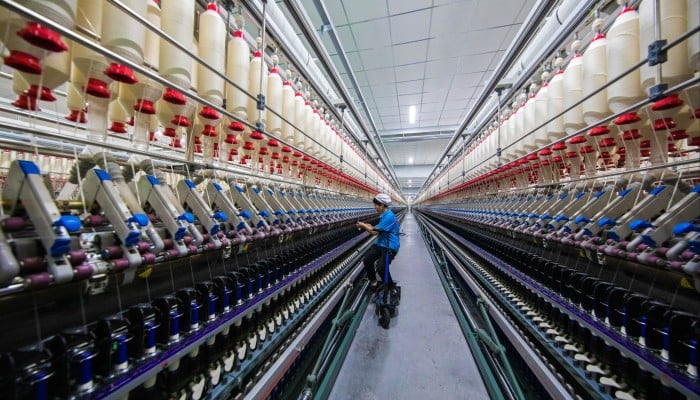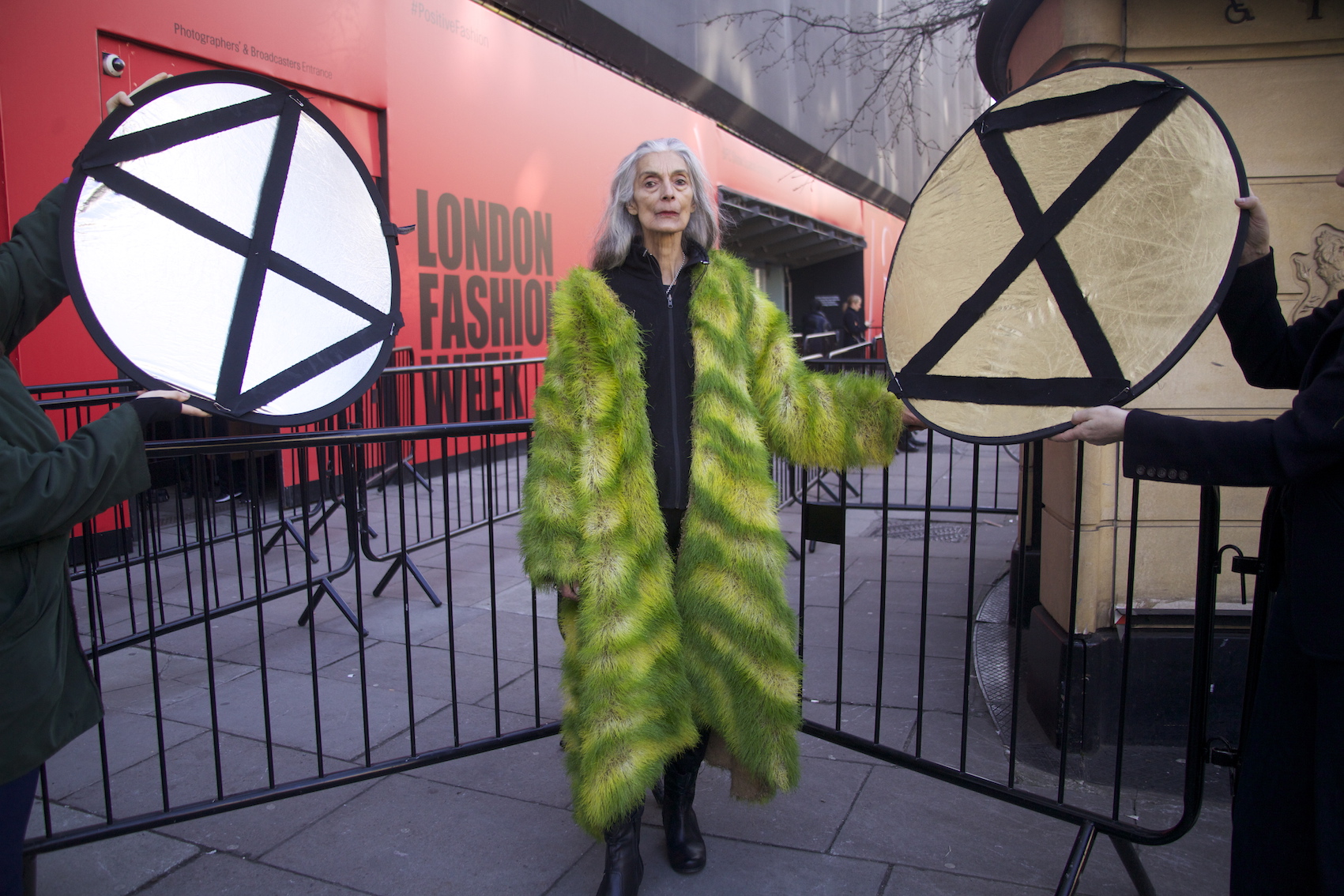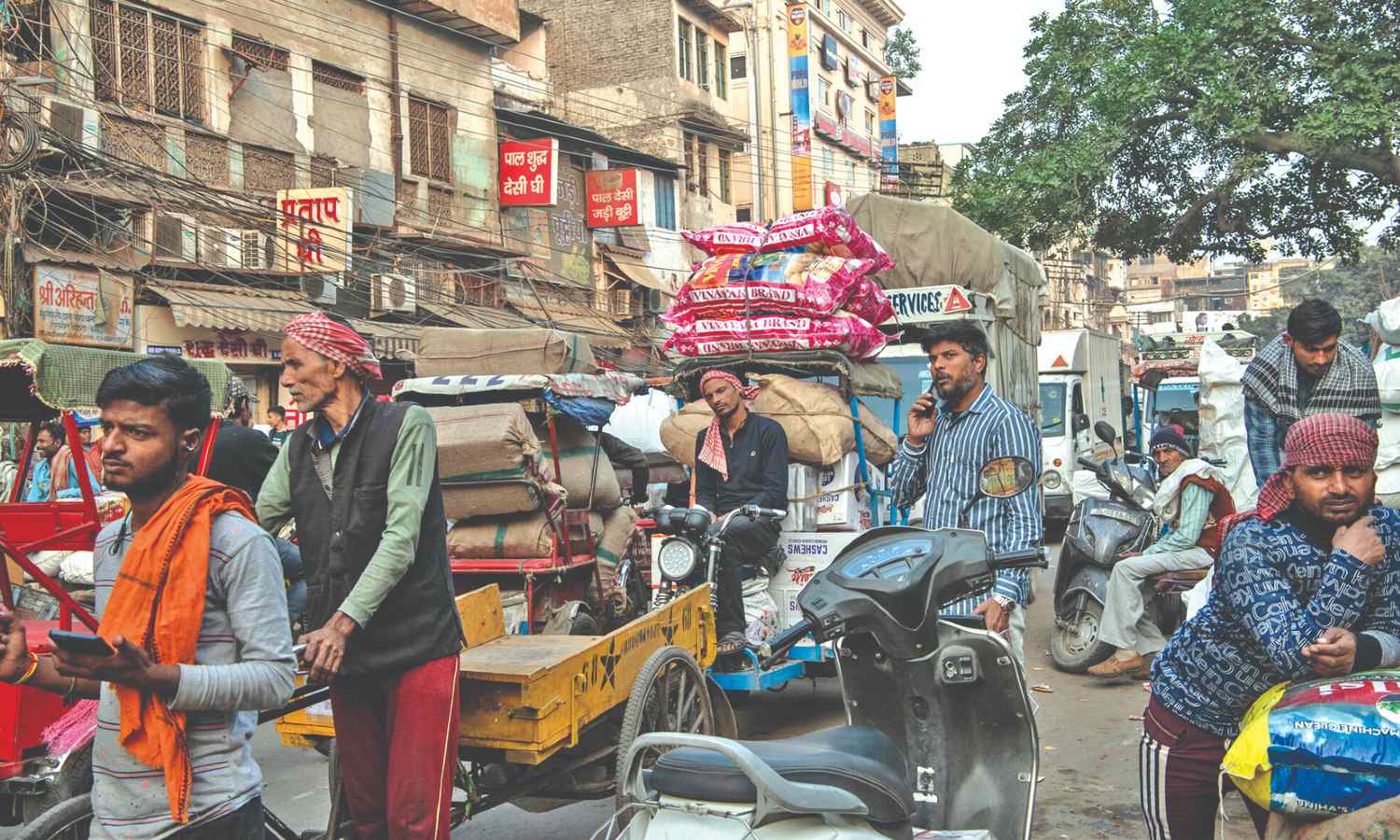FW
A segment of the upstream textile industry has now asked for 12 per cent GST on textiles and garments. In fact, textiles are essential goods and the lowest GST rate of five per cent looks likely on them. So it’s not that a tax waiver or a low rate of tax is everyone’s choice. The question is why the industry should take a higher tax burden on itself.
A 12 per cent tax incidence under the GST regime for the entire textile and garment industry will benefit only a few large man-made fiber companies with an integrated set-up. Natural fiber-based textile players will be at a disadvantage if the tax rates go up. Natural fibers like cotton fiber are produced out of raw cotton and, since no duty will be paid on the raw material due to the fact that it’s a farm produce, the entire 12 per cent tax burden will fall on the ginners/spinners who produce cotton fiber/yarn. Only an integrated player with weaving, processing and garmenting facilities can offset the input tax costs against output tax liability.
Currently, natural fibers — including cotton — do not attract any excise duty, while a 12.5 per cent excise duty is levied on man-made fibers such as polyester. A four to six per cent value added tax is imposed by states on both man-made and natural fibers.
Toronto-based Fine Cotton Factory has got the Global Organic Textile Standard (GOTS) certification, a stringent, voluntary international standard for processing of organic, fiber-containing products and addresses post-harvest processing stages such as spinning, knitting, weaving, dyeing and manufacturing. This will allow the factory to offer GOTS-certified organic-cotton mattress fabric.
The GOTS certification includes both environmental and social provisions for post-farm to retail-shelf management. Key provisions include a ban on the use of child labour, genetic engineering, heavy metals and highly hazardous chemicals such as formaldehyde, while requiring living wages and strict wastewater treatment practices.
Director of special projects for Fine Cotton Factory, Skip Kann said his company has worked diligently to earn this certification and know that their partners will appreciate the additional assurance the GOTS certification brings. The textile industry is interested in suppliers that offer GOTS-certified fabrics.
The company has organic cotton products line and the GOTS-certified accreditation takes their product line to the next level. There’s a growing lifestyle in all types of organic goods, and they are involving themselves in the demand for certified-organic textiles. Fine Cotton believes in the standard. The GOTS certification received by Fine Cotton Factory must be renewed annually.
The European Apparel and Textile Confederation (EURATEX) has welcomed Klaus Huneke as its next President. He assumes office for a two-year term from Jan 2017 and succeeds Sege Piolat who headed EURATEX for the last two years.
On being elected as EURATEX’ president, Huneke said it was Piolat who achieved impressive results in strengthening the voice of the European textile and clothing industry. He further said that his intention would be to focus on few strategic priorities such as better communication towards policymakers and stakeholders on the excellence of innovation and sustainability that enhances EU competitiveness and greater participation of companies in innovation…..”
On the back of higher shipments of garment, exports from Bangladesh saw a growth of 7.11 per cent in 2016 to $34.93 billion. The amount would have been more if the country's major export destinations had not gone through an uncertain political time last year, according to exporters. Bangladesh typically ships more than $3 billion worth of garment products to the UK in a year.
Garment shipments, typically account for 80 per cent of the export earnings roped in $28.61 billion last year, up 7.89 per cent year-on-year, according to a data of the Export Promotion Bureau. Commenting on this Bangladesh Garment Manufacturers and Exporters Association, vice president Faruque Hassan said the country’s exports grew even amid the volatile condition around the world. That is why the garment sector is hopeful that it will perform even better this year.
In 2016, the unit price of garment items decreased by 2 per cent year-on-year and the depreciation of the pound as a result of the UK's shock decision to withdraw from the European Union on June 23, 2016 affected the receipts. The UK is the third largest export destination for Bangladesh after the US and Germany.
With the uncertainty surrounding Brexit, the election of Donald J Trump as the 45th president of the US and the scheduled polls in Germany and France, the outlook does not look too promising. Hassan said that it was not a major cause of concern as exports to new destinations have been on the rise as a result of relaxation of the Rules of Origin.
The apparel industry must address issues of gas and power shortage, market diversification, access to new markets and political stability for achieving the targeted export growth in 2017, the BGMEA vice-president averred. However, the last year ended on a somewhat dismal note, as exports slid 3.11 per cent in the month of December from a year earlier.
Fashion companies are worried about the source of wood pulp used in the clothing they make. Rising cotton prices have boosted demand for wood-based fabrics such as viscose, rayon and modal, which increasingly involves clearing forests and taking land used by indigenous people. Indonesia is a major producer of wood pulp.
Ralph Lauren is the latest in a growing number of fashion companies to pledge investigation of its supply chain to determine if it is using products from the most destructive regions and stop using those sources by the end of 2017.
In countries like Indonesia, the production of pulp for fabrics has been devastating indigenous forest-dependent communities. Production of wood pulp can involve clearing forests to build eucalyptus plantations, taking land traditionally used by indigenous communities.
It’s estimated Indonesia lost 18.5 million hectares of tree cover from 2001 to 2014. When fashion brands start to take responsibility for their supply chains that can have a real positive impact for forests and the people that depend on them. H&M, Zara, ASOS, Levi Strauss and British fashion designer Stella McCartney have adopted similar sourcing policies. Last year Stella McCartney partnered with environmental non-profit Canopy to encourage clothing companies to stop sourcing fabric from ancient and endangered forests.
"All hopes rest on the fourth quarter of fiscal year 2016-17 for the textile mills to tide over tough times. The Textile Ministry's initiative to allow mills to pay only 10 per cent of procurement money has come as a breather. They feel, the move could ease production cost in the last quarter of the fiscal. Moreover, the industry is looking to orders for summer season 2017 to boost fourth quarter results."
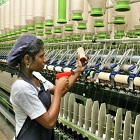
All hopes rest on the fourth quarter of fiscal year 2016-17 for the textile mills to tide over tough times. The Textile Ministry's initiative to allow mills to pay only 10 per cent of procurement money has come as a breather. They feel, the move could ease production cost in the last quarter of the fiscal. Moreover, the industry is looking to orders for summer season 2017 to boost fourth quarter results.
Mill owners hope Q4 will not be as bad as the Q3. They are focusing more on exports which could help them boost the results. However, everyone in the industry hopes that business would pick up in the first quarter of next financial year.
Cotton pricing initiatves
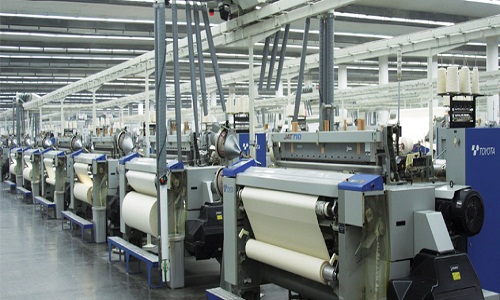
While large traders and multinational cotton traders take advantage of hedging facility and cheaper funds, mills are unable to build adequate inventory and have been paying higher price for the cotton during off season. More than 75 per cent of the cotton arrives in market from December to March and around Rs 60,000 crores is required to procure seed cotton during this period. Since ginning and spinning mills do not have such funds, farmers invariably get lower price. Owing to that, the cotton textile industry had been demanding the government to ensure cotton fibre security and stability in cotton prices so that both farmers and the industry get benefits and remain competitive in the global market. With the new textile minister directing Cotton Corporation of India (CCI) that normally procures cotton only when the prices crash below minimum support price to procure cotton on a commercial basis and supply to the mills, the textile industry has welcomed the move.
The new terms and conditions of fully pressed bales of CCI facilitates registered MSME textile units to procure cotton by paying only 10 per cent deposit money as against 20 per cent which is applicable only for the sale quantity of 30,000 bales and above. “The deposit money up to 2,999 bales is only 15 per cent. This would greatly help MSME units which are starving for working capital fund in the post-demonetisation regime,” explains M Senthilkumar, Chairman, Southern India Mills' Association (SIMA).
Senthilkumar further says earlier there was a difference in the free period ranging from 30 to 75 days and 75 days free period was available for the procurement of 15000 bales and above, which led to MSME textile units' inability to derive much benefit out of CCI. “However, now the free period has been made uniform and fixed at 45 days which would again help the actual users and the MSME units,” he stated.
Hoping for the good times
Textile industry sources say, CCI might procure around 1.5 million bales and maintain an inventory of 500,000 bales so that stability in cotton price is maintained. Meanwhile, the textile industry has also been requesting CCI to opt for coastal movement of bales between Gujarat and Tamil Nadu that would again yield considerable saving for the mills, of anywhere between 10 per cent 25 per cent in freight costs.
"Raw material prices for Polyester and nylon rose in many nations, including China, due to the recent OPEC deal and short-term demand for fibers, says a new report from PCI. This mechanism will continue until producers realise there is insufficient forward demand; probably as a slowdown hits heading coming into the Lunar New Year (LNY), and if not then a few weeks after LNY. In addition to expected oil price discipline, there has been excitement at the upcoming start of an MEG futures market in China which is stoking speculative pricing."

Raw material prices for Polyester and nylon rose in many nations, including China, due to the recent OPEC deal and short-term demand for fibers, says a new report from PCI. This mechanism will continue until producers realise there is insufficient forward demand; probably as a slowdown hits heading coming into the Lunar New Year (LNY), and if not then a few weeks after LNY. In addition to expected oil price discipline, there has been excitement at the upcoming start of an MEG futures market in China which is stoking speculative pricing. Other markets, including viscose and spandex raw materials, also experienced price increases in December and Chinese exports are projected to achieve a year-end record at the end of the month.
Rising raw material prices
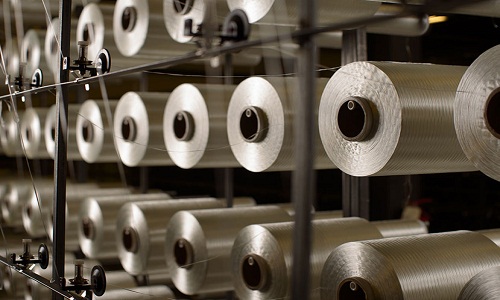
Polyester raw material prices, particularly those of paraxylene (PX) jumped in December, due to rising oil prices and PX capacity expectations. In Asia, PX experienced a quick rollover at $795 for the month, followed by prices that surpassed the $850/metric ton barrier. North American PX prices settled at 42.00 c/lb, which was up 1.0c/lb following the production cutback agreement implemented by OPEC and non-OPEC nations. The European PX settlement was $795/ton for December. As per the report, there are no suggestions of either PX or PTA supply issues currently in the short month of December. The expectation is of higher prices going forward but no supply issues for PX.
While Asia remains a catalyst for global benzene market, nylon raw material prices rose in December. China’s strong demand for benzene and higher crude oil prices were responsible for this price surge. PCI said current spot prices are expected to reach up to $100/ton in January. Asia’s benzene prices surpassed $115/ton, due to strong styrene demand and inventory rebuilding before the Chinese new year.
American benzene contract price negotiations ended in December with a split settlement of $700 to $703/ton, which was an increase of $33 to $45/ton over November’s split settlement. December spot negotiations also are $658/ton to $667/ton and rose approximately $100/ton over November levels. European benzene contract prices settled at $667/tonne, up from $659/tonne in November. A weaker exchange rate between the Euro and American Dollar contributed to this price jump in European nylon raw material prices.
Viscose fiber prices inched upward in December as viscose staple fiber (VSF) prices recovered. Medium quality VSF prices stabilized at $1.89 to 1.91/kg excluding VAT in November until mid-December, when medium quality VSF prices increased to $2,187-2215/tonne. VSF demand globally remains high and processors have minimized inventories to avoid harsh price changes. Many major VSF companies, including Lenzing, are also taking advantage of higher VSF demands by boosting their production capabilities. Lenzing will construct a new 90 kilotons per annum (kpta) lyocell plant in the US, which will boost the company’s VSF production to 333 kpta by 2020.
Spandex prices went up in December as Chinese exports remain robust at the end of the year. Higher spandex prices in Asia, particularly those in China, were attributed to firmer feedstock prices. China’s MDI price rose from $2.85/mt to $2.99/mt, meanwhile China’s PTMEG prices also rose from $1.94/mt to $2.09/mt. Furthermore, Chinese spandex imports have reached 60 kt, which was up nine per cent from 2015, as the nation prepares to expand its spandex sector. North America’s spandex prices remained relatively quiet, but PCI said there is optimism for next year’s market. The region’s spandex industry may benefit from the likely cancelation of TPP and international performance fabric manufacturing investments.
In Europe, spandex prices remained unchanged for December despite higher hosiery sales. “Although Chinese spandex price offers are beginning to move upwards, there appears to be insufficient strength in the wider European spandex markets to support any price drive into Q1 2017,” the report noted. “Our expectations are therefore for a rollover in mainstream pricing for Q1 2017 but some of the cheapest import offers may disappear from the market, giving a tighter price spread.”
"The global fashion industry is up for good times in 2017 amid signs of a rebound in consumer markets in Mainland China and Hong Kong. In recent past, global giants such as Prada, Burberry and Richemont had tough times operating out of Mainland Chinese as consumers scaled back spending on luxury goods amid Beijing’s anti-corruption campaign and cooling economic growth. For some luxury brands, year 2016 was one of the most difficult as fluctuating currencies, a wave of terrorist attacks across Europe and the Brexit shock led to a new era of volatility. "

The global fashion industry is up for good times in 2017 amid signs of a rebound in consumer markets in Mainland China and Hong Kong. In recent past, global giants such as Prada, Burberry and Richemont had tough times operating out of Mainland Chinese as consumers scaled back spending on luxury goods amid Beijing’s anti-corruption campaign and cooling economic growth. For some luxury brands, year 2016 was one of the most difficult as fluctuating currencies, a wave of terrorist attacks across Europe and the Brexit shock led to a new era of volatility. “Indeed, this has been one of the toughest years ever for the global fashion industry,” analysts at McKinsey said in a recent 92-page report.
Turn of events

Luxury fashion companies were likely to see annual revenue growth of just 0.5 per cent, the report said, noting that it had surveyed responses from 400 companies. Executives interviewed by McKinsey were pinning their hopes for a turnaround in 2017. McKinsey forecast sales growth this year of 3.5 per cent, up from 2 to 2.5 per cent growth in 2016. Many of them have already undertaken significant cost-cutting and restructuring exercises, and are now primed to capture the benefits.
Richemont, known for its Piaget and IWC timepieces and Cartier diamond necklaces announced job cuts, early retirement packages, and abolishment of chief executive’s position, along with retirement of eight directors in 2016. Luxury goods sales to Chinese shoppers, who make up roughly a third of global consumption, will shrink for the first time in modern history in 2016, predicts Bain. They estimated luxury goods sales in Hong Kong fell 15 per cent for the full year 2016. The drop can be partly explained by Hong Kong’s US-dollar linked currency, which appreciated in line with the US dollar’s 6.6 per cent gain against the yuan.
Hermès, traditionally among most resilient companies, said in September it would abandon its 8 per cent annual sales growth target for 2016, while German upmarket brand Hugo Boss AG in December said its 2016 operating profit would likely drop 17 to 23 per cent. Selected currency movements are affecting consumption in 2016. Brexit, the US presidential election and European terrorism all impacted consumer confidence and touristic flows, according to Bain.
Following years of retail expansion across China, top labels such as Gucci and Louis Vuitton closed some boutiques in smaller inland cities in 2016, in a bid to trim back their retail network and restore scarcity value.
A shift in focus
Brands are now focusing more on entry-level products. Richemont’s Piaget recently launched a lower priced sports line to tap into shifting spending habits, while Prada has been focusing on HK$1,000 to HK$2,000 bags. Discounts will become more prevalent in China going forward thanks to the growth in outlet malls, McKinsey said. Macquarie analyst Daniele Gianera believes luxury brands that innovate are more likely to win market share in the long run. Once customers have bought your signature line items, they want something new. Many consumers are redirecting their spending towards experiential luxuries, such as travel, entertainment, fine dining and fine art. The trend visible among US consumers for the past half decade is becoming increasingly common in China, Gianera said.
World cotton production in 2016-17 is likely to rise by eight per cent and world consumption is likely to remain stable, which may put pressure on prices in the latter half of the season. World ending stocks may fall by seven per cent in 2016-17, though stocks outside of China are expected to grow by six per cent. The current season began with lower stocks, particularly from countries in the southern hemisphere, which saw ending stocks in 2015-16 fall by 21 per cent, the lowest since 2009-10.
The shortage in supply carried through the first few months of the 2016-17 season thereby keeping prices firm. India’s cotton production is expected to increase by four per cent, making it the world’s largest producer. Polyester prices have shown an uptrend, but still well below international cotton prices, making it unlikely that cotton mill use will expand unless polyester prices continue to rise. Gujarat is one of the key producers of cotton in India.
Mill use of cotton in India is projected to decline by one per cent. Traders cited reduced arrivals and cash shortage in banks as the reason for the rally in cotton prices, whereas most believe that the rally may not continue longer on good production.
The weaving sector, particularly ones that supply goods to exporters for being shipped abroad, are almost on the verge of collapse due to government’s policies. In other words, all trading activities have come to a halt and now all weavers are at the mercy of exporters to get yarn from them. In addition to this, the financially weak exporters who were relying on traders and indirect exporters to provide them fabric are going out of business.
Addressing an extraordinary general meeting of the Pakistan Weaving Mills Association (PWMA) Asif Siddiq, a founding member said that exporters have been allowed to import yarn without duty or income tax and sales tax. On the other hand indirect exporters have to pay a 15 per cent customs duty and one per cent income tax on import of yarn, he added.
Due to shortage of cotton in Pakistan and high input cost, the weaving industry is relying mostly on imported yarn from India, China, Indonesia and Turkey. With this kind of policy, the government has taken the indirect exporters out of the market, he added.
The government needs to deal with direct and indirect exporters in an even-handed way and consult all stakeholders before making policies. Siddiq hoped that the textile package about to be announced by the government should address this issue. At the same time, he demanded, the government should immediately release sales tax refunds so that the textile sector can come out of its financial crisis, which he attributed to delays in the payment of refunds.



